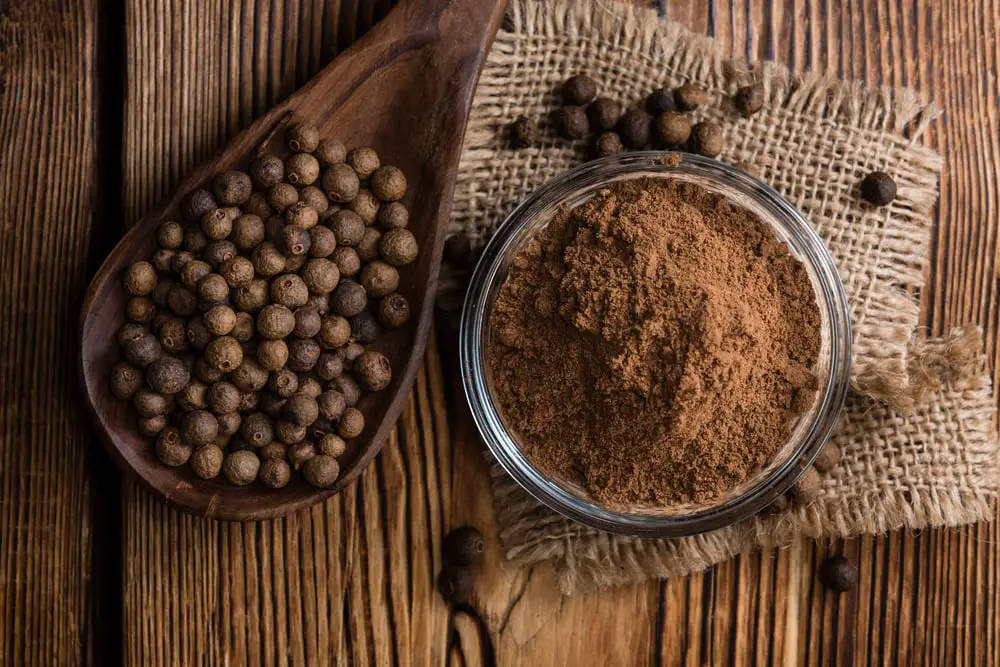Allspice and nutmeg are both popular spices that have been used for centuries in cooking and baking, but they have distinct flavors, origins, and uses that set them apart. Understanding the differences between allspice and nutmeg can help cooks and bakers choose the right spice for their recipes to achieve the desired flavor profile. This article explores the characteristics, culinary uses, health benefits, and differences between allspice and nutmeg.
What is Allspice?
Allspice is a spice made from the dried berries of the Pimenta dioica tree, which is native to the Caribbean, Mexico, and Central America. It is called “allspice” because its flavor is said to resemble a combination of cinnamon, nutmeg, and cloves. Allspice berries are small, dark brown balls that are usually ground into a powder before being used in cooking and baking.
Culinary Uses of Allspice
Allspice is versatile and can be used in both sweet and savory dishes. It is a key ingredient in Caribbean cuisine, especially in Jamaican jerk seasoning, as well as in Middle Eastern dishes, such as stews and meat dishes. Allspice is also used in baking, added to cakes, cookies, and desserts for a warm, spicy flavor.
What is Nutmeg?
Nutmeg is a spice that comes from the seed of the nutmeg tree (Myristica fragrans), an evergreen tree native to the Spice Islands of Indonesia. The seed is encased in a bright red, lacy covering called mace, which is also used as a spice. Nutmeg is typically sold whole and grated fresh or pre-ground.
Culinary Uses of Nutmeg
Nutmeg has a warm, sweet flavor that makes it a popular addition to sweet dishes like pies, puddings, and custards, as well as savory dishes such as soups, sauces, and vegetable dishes. It is commonly used in European cuisine, particularly in Italian and French recipes, and is a staple ingredient in spice blends like garam masala and pumpkin pie spice.
Health Benefits
Both allspice and nutmeg have health benefits. Allspice contains eugenol, a compound with antiseptic and analgesic properties, and is rich in antioxidants, which can help reduce inflammation and protect against disease. Nutmeg is known for its digestive benefits and can help relieve pain and indigestion. It also contains compounds that may have neuroprotective and anti-inflammatory effects.
Differences Between Allspice and Nutmeg
Flavor Profile: Allspice has a complex flavor that combines elements of cinnamon, nutmeg, and cloves, while nutmeg has a sweet, warm, and slightly nutty flavor.
Origin: Allspice comes from the Pimenta dioica tree in the Caribbean and Central America, whereas nutmeg is derived from the Myristica fragrans tree in the Spice Islands of Indonesia.
Culinary Uses: Allspice is commonly used in Caribbean and Middle Eastern cuisines, as well as in baking. Nutmeg is favored in European cuisines and is often used in sweet dishes, although it also complements savory dishes well.
Health Benefits: Both spices offer health benefits, including anti-inflammatory and antioxidant properties, but they contain different compounds and thus have different effects on health.
While allspice and nutmeg may appear similar at first glance, they have distinct flavors, origins, and uses that make them unique. Allspice offers a blend of flavors that can add depth to both sweet and savory dishes, while nutmeg provides a sweet, nutty flavor that enhances the taste of many recipes. Both spices are not only valuable for their culinary uses but also for their health benefits, making them a great addition to any kitchen.
Exploring the Versatility in Recipes
The versatility of allspice and nutmeg means they can be used in a wide range of recipes, from traditional dishes to innovative culinary creations. Allspice, with its rich blend of flavors, is perfect for adding complexity to meat marinades, stews, and even beverages like mulled wine and cider. Its ability to mimic several spices makes it a handy ingredient when other spices might be unavailable. Nutmeg, on the other hand, shines in dairy-based sauces, spinach, and cheese dishes, bringing a warmth that complements these ingredients beautifully. Its inclusion in dessert recipes, such as apple pie, spice cakes, and eggnog, highlights its essential role in creating comforting and festive flavors.
Substituting Allspice for Nutmeg and Vice Versa
While allspice and nutmeg have distinct flavors, they can sometimes substitute for each other in recipes, especially in emergencies. However, due to their unique taste profiles, the substitution may not always provide the exact intended flavor. When substituting, it’s important to start with smaller amounts and adjust to taste. For example, in a recipe calling for nutmeg, using allspice as a substitute could introduce a hint of clove and cinnamon, which might be desirable in some dishes but not in others.
Cultural Significance
Both allspice and nutmeg hold significant cultural importance in their regions of origin and beyond. Allspice is a staple in Jamaican cuisine, not just for its flavor but also for its cultural identity, particularly in dishes like jerk chicken. Nutmeg, historically, was so highly valued for its flavor and purported medicinal properties that it played a central role in the spice trade, leading to colonial competitions and even wars over its source islands.
Sustainability and Ethical Considerations
The production of allspice and nutmeg raises questions about sustainability and ethical practices in spice farming. As demand for these spices grows, it’s important to consider the impact of their cultivation on local ecosystems and communities. Supporting fair trade and ethically sourced spices can contribute to the sustainability of spice farms, ensuring that farmers receive fair compensation and that practices beneficial to the environment are employed.
Incorporating Allspice and Nutmeg into Your Diet
Incorporating allspice and nutmeg into your diet can enhance the flavor of your meals while also providing health benefits. Both spices can be easily added to your daily cooking, from a pinch of nutmeg in your morning coffee to a sprinkle of allspice in your evening stew. Experimenting with these spices can lead to delightful discoveries and broaden your culinary repertoire.
Allspice and nutmeg are more than just seasoning; they are a gateway to exploring global cuisines, understanding cultural histories, and experiencing a range of health benefits. Their distinct flavors and versatility in cooking make them indispensable in the kitchen. By appreciating the differences and similarities between allspice and nutmeg, cooks and food enthusiasts can make informed choices about how to use these spices to elevate their dishes. Whether you’re aiming to recreate traditional recipes or innovate new ones, understanding the unique characteristics of allspice and nutmeg is key to achieving the desired culinary outcomes.




